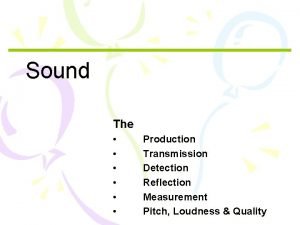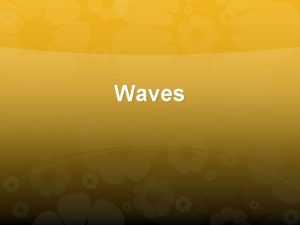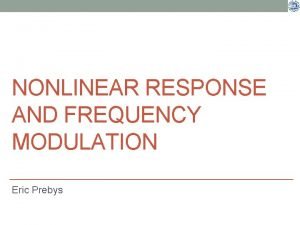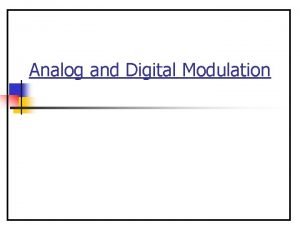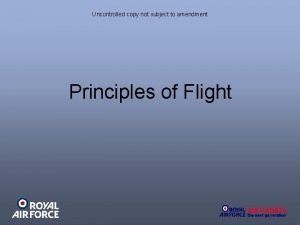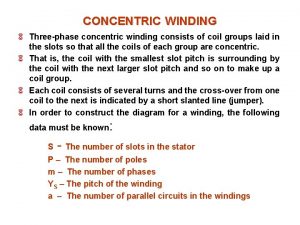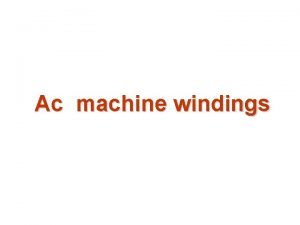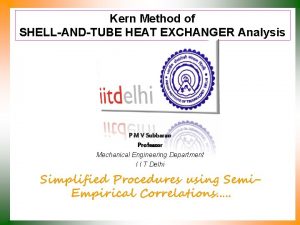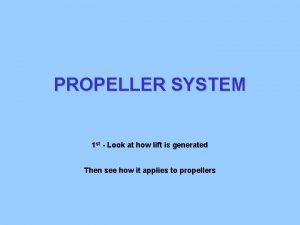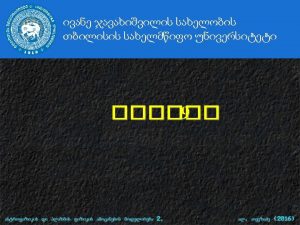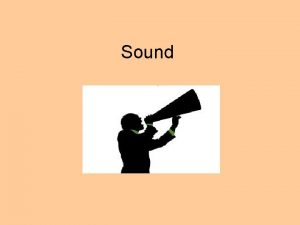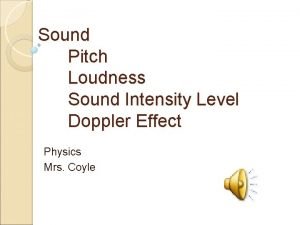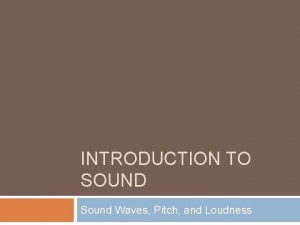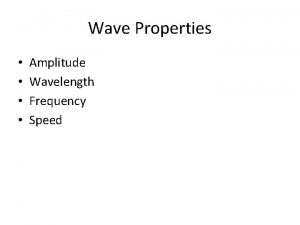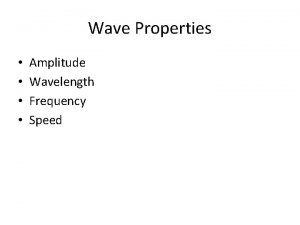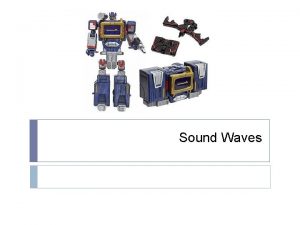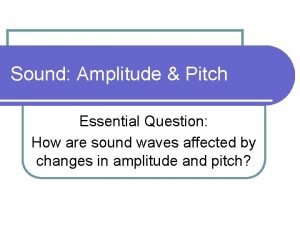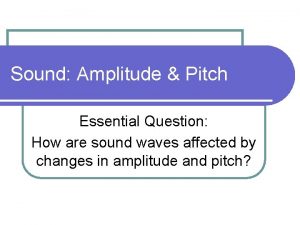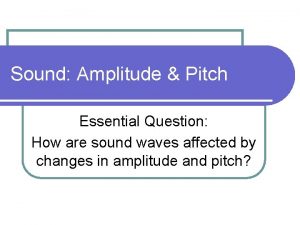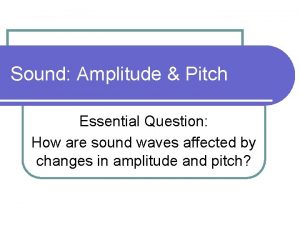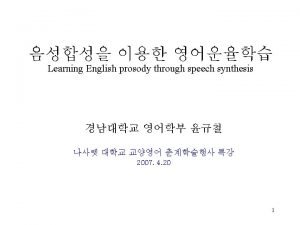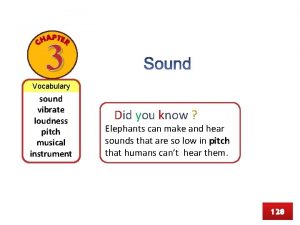Sound Characteristics Loudness Amplitude Pitch frequency Wave Formulas














- Slides: 14

Sound

Characteristics • Loudness --> Amplitude • Pitch -->frequency

Wave Formulas

Speed of Sound • The speed of sound in air changes with temperature. • The speed at 0 o. C is 331 m/s for dry air • It increase by 0. 6 m/s for each degree Celsius above zero.

Echoes • An echo is a reflected sound wave • An echo is sent from and detected at the same location • An echo must travel the distance to the barrier two times to get back to the detector

Doppler Effect • • • v = velocity of sound in air vs = velocity of source (toward is +) vd = velocity of detector (toward is +) f = frequency emitted f ' = frequency detected

Sound Intensity 1 E -12 W/m 2 • = decibels (d. B) • P = Power of source (watts) • I = intensity (W/m 2) • R= distance from source (m) • Io = 10 -12 W/m 2 threshold of hearing

Concepts • A 20 d. B increase = 10 times the pressure • A 10 d. B increase = twice the loudness

Remember units! • • • Frequency -- Hertz (cycles/sec) Period -- seconds Wavelength -- meters Wave speed -- m/s Intensity -- W/m 2 Sound intensity level -- decibels (d. B)

Harmonics and Overtones st 1 nd 2 harmonic = fundamental (f 1) frequency harmonic = st 1 overtone (f 2) 3 rd harmonic = 2 nd overtone (f 3) 4 th harmonic = 3 rd overtone (f 4) and so on. . .

Resonance and Fundamental Frequency in air columns (tubes) • Open ends have an antinode • Closed ends have a node • fundamental frequency is lowest frequency possible (lowest frequency longest wavelength) • use length of pipe to calculate wavelength by relating the length to the number of wavelengths formed

Resonance in air columns (tubes) Remember: open end antinode, closed end node • Fundamental frequency (1 st harmonic) has 1 node • 1 st overtone (2 nd harmonic)-2 nodes • 2 nd overtone (3 rd harmonic)-3 nodes • and so on … • Assume speed of sound in air to be 343 m/s unless told otherwise (i. e. sound not in air or you are given a specific temp of air).

Resonance on Strings • Fundamental frequency has ONE antinode (L = /2) (or segment) • 2 nd harmonic (1 st overtone) – 2 antinodes (L = ) (or segments) • 3 rd harmonic (2 nd overtone) - 3 antinodes ( L = 3 /2) (or segments) • 4 th harmonic (3 rd overtone) - 4 antinodes ( L = 2 ) (or segments) • and so on…

Beats • Beats occur due to interference patterns between sound waves of different frequencies. • Sounds with frequencies separated by 7 Hertz or less will produce beats that can be detected by the human ear.
 What is echo
What is echo Amplitude wavelength and frequency
Amplitude wavelength and frequency Amplitude modulation vs frequency modulation
Amplitude modulation vs frequency modulation Amplitude modulation vs frequency modulation
Amplitude modulation vs frequency modulation Texture refers to loudness and quietness of music
Texture refers to loudness and quietness of music Loudness contour
Loudness contour Cyclic pitch vs collective pitch
Cyclic pitch vs collective pitch Back pitch and front pitch
Back pitch and front pitch Coil pitch and pole pitch
Coil pitch and pole pitch Types of ac winding
Types of ac winding The overall heat transfer coefficient
The overall heat transfer coefficient Helix angle of propeller
Helix angle of propeller Pitch 2 pitch chanhassen
Pitch 2 pitch chanhassen Similarities of mechanical waves and electromagnetic waves
Similarities of mechanical waves and electromagnetic waves Small amplitude wave
Small amplitude wave
